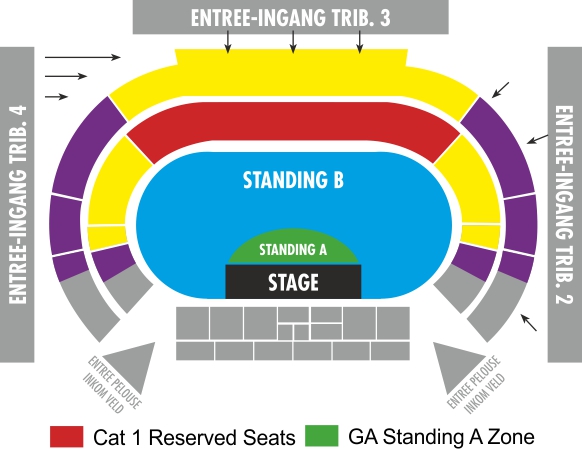Koning Boudewijnstadion

Directions
From Brussels Centre:
Head north on Majoor René Dubreucqstraat toward Londenplein
Slight left at Londenplein
Turn left at N248/Troonstraat
Turn right at Marnixlaan/R20a
Turn left to stay on Marnixlaan/R20a
Turn right at Kunstlaan/R20a
Slight right at R20
Take the ramp onto Boudewijnlaan/R20a
Continue to follow R20a
Turn right at N201/Willebroekkaai
Continue to follow N201
Continue on Koninginnelaan/N277
Continue to follow N277
Arrive at 1020 Brussels, Belgium
Information
The King Baudouin Stadium (French: Stade Roi Baudouin) is a sports ground in north-west Brussels, Belgium. Opened on August 23, 1930 (days after Belgium's 100th anniversary) as the Stade du Jubilé or Jubelstadion (Jubilee Stadium) in the presence of Prince Leopold. The stadium hosted 70,000 at the time. A wooden track for cycling races was later added around the pitch.
It was renamed Heysel Stadium in 1946. It hosted European Cup finals in 1958, 1966, 1974, and 1985 and Cup Winners' Cup finals in 1964, 1976, and 1980. The highest attendance at a European game was over 66,000 in 1958.
Despite its status as Belgium's national stadium, Heysel was not well maintained. By the time of the 1985 European Cup, it was literally crumbling.
The ground was rebuilt and renamed King Baudoin Stadium at a cost of BEF 1,500 million (around $50 million in 1995). It was named after King Baudouin I.
The only remaining part of the old stadium is a renovated gateway near the main entrance. The new structure combined the football ground with a running track and facilities for field events. It was re-opened on August 23, 1995 as the home of the national soccer team and is the largest stadium in Belgium; it can seat 50,024 spectators. It hosted the opening game for Euro 2000.
Amenities
Address
Koning Boudewijnstadion
Marathonlaan 135
120 Brussels